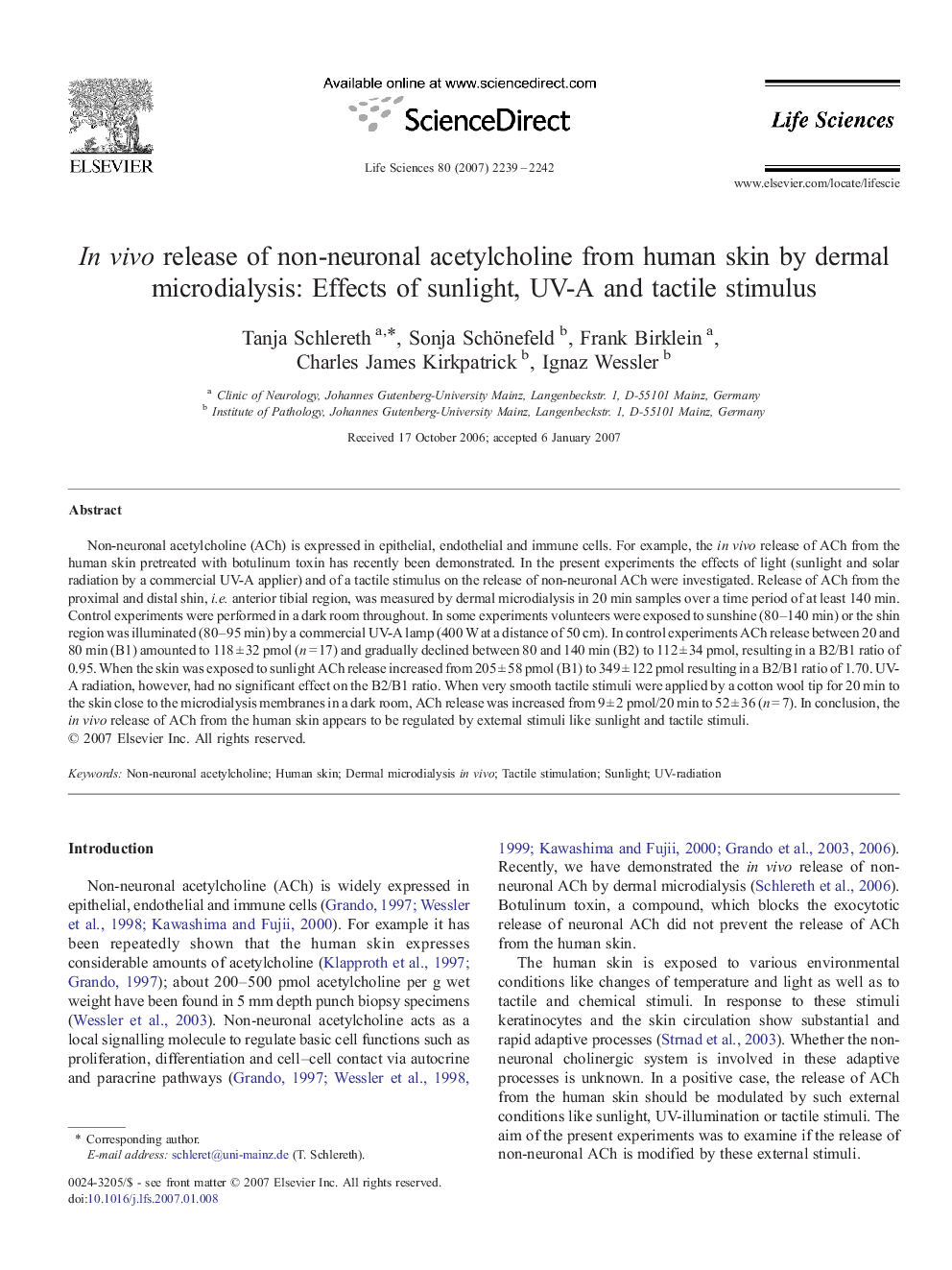| کد مقاله | کد نشریه | سال انتشار | مقاله انگلیسی | نسخه تمام متن |
|---|---|---|---|---|
| 2553559 | 1560769 | 2007 | 4 صفحه PDF | دانلود رایگان |

Non-neuronal acetylcholine (ACh) is expressed in epithelial, endothelial and immune cells. For example, the in vivo release of ACh from the human skin pretreated with botulinum toxin has recently been demonstrated. In the present experiments the effects of light (sunlight and solar radiation by a commercial UV-A applier) and of a tactile stimulus on the release of non-neuronal ACh were investigated. Release of ACh from the proximal and distal shin, i.e. anterior tibial region, was measured by dermal microdialysis in 20 min samples over a time period of at least 140 min. Control experiments were performed in a dark room throughout. In some experiments volunteers were exposed to sunshine (80–140 min) or the shin region was illuminated (80–95 min) by a commercial UV-A lamp (400 W at a distance of 50 cm). In control experiments ACh release between 20 and 80 min (B1) amounted to 118 ± 32 pmol (n = 17) and gradually declined between 80 and 140 min (B2) to 112 ± 34 pmol, resulting in a B2/B1 ratio of 0.95. When the skin was exposed to sunlight ACh release increased from 205 ± 58 pmol (B1) to 349 ± 122 pmol resulting in a B2/B1 ratio of 1.70. UV-A radiation, however, had no significant effect on the B2/B1 ratio. When very smooth tactile stimuli were applied by a cotton wool tip for 20 min to the skin close to the microdialysis membranes in a dark room, ACh release was increased from 9 ± 2 pmol/20 min to 52 ± 36 (n = 7). In conclusion, the in vivo release of ACh from the human skin appears to be regulated by external stimuli like sunlight and tactile stimuli.
Journal: Life Sciences - Volume 80, Issues 24–25, 30 May 2007, Pages 2239–2242